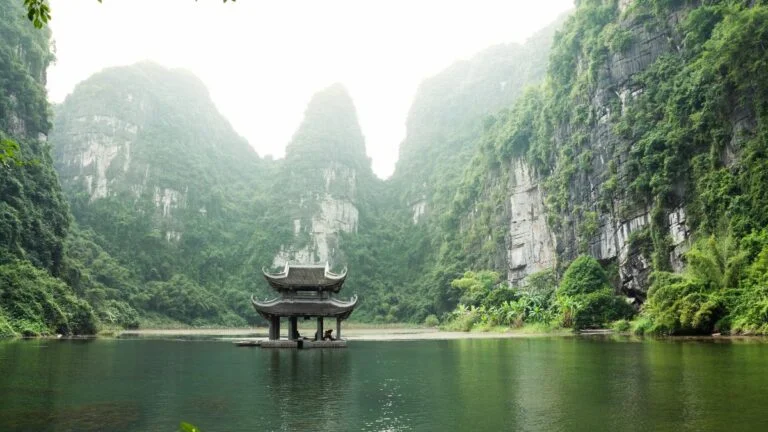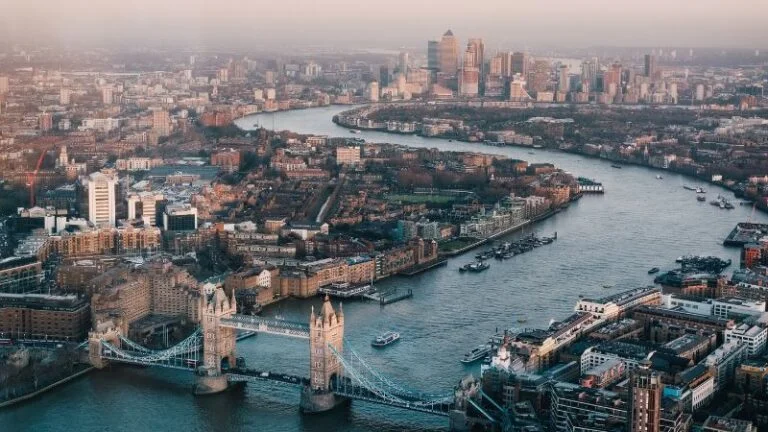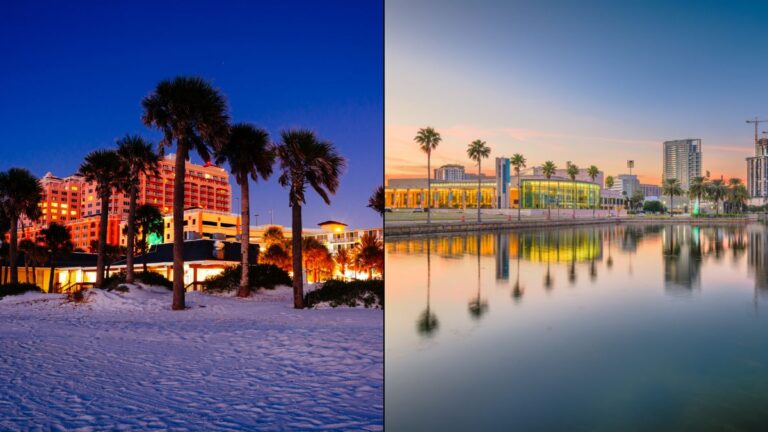50 Facts About Italy You Need to Know Before Traveling There

As participants in Amazon Associates and other programs, we earn from qualifying purchases. This comes at no additional cost to you. For more details, see our Affiliate Disclosure.
If you’re planning a trip to Italy, there’s a lot more to this beautiful country than just pizza and pasta. Italy is a land steeped in history, culture, and stunning landscapes. From the bustling streets of Rome to the tranquil waters of Lake Como, each corner of Italy has something unique to offer. Knowing a bit more about the country can truly enrich your experience. So, let’s dive into some fascinating facts about Italy that will help you appreciate its depth during your travels.
Italy Has Over 50 UNESCO World Heritage Sites
Italy boasts an impressive collection of over 50 UNESCO World Heritage Sites, underscoring its rich historical, cultural, and natural heritage. From the architecturally stunning city of Florence to the archaeological wonders of Pompeii and the natural beauty of the Dolomites, each site offers a unique window into Italy’s diverse and storied past. This abundance of preserved sites attracts millions of visitors each year, eager to explore Italy’s deep-rooted history and breathtaking landscapes.
The Vatican City is an Independent Country Inside Rome
The Vatican City is a sovereign city-state enclaved within Rome, established in 1929 by the Lateran Treaty signed with Italy. Spanning just over 44 hectares, it is the smallest independent state in the world by both area and population. As the spiritual and administrative center of the Roman Catholic Church, it houses crucial religious and cultural sites, including St. Peter’s Basilica, the Sistine Chapel, and the Vatican Museums, home to some of the world’s most famous art.
Italy Invented the Espresso Machine and the Culture of Coffee
Italy’s contribution to the world of coffee cannot be overstated, having invented the espresso machine in the early 20th century. This innovation paved the way for the culture of coffee bars, where the ritual of coffee drinking is treated with reverence. Today, espresso stands as a symbol of Italian ingenuity and the social fabric of Italian society, influencing coffee culture globally.
Italian is the Official Language, But Over 30 Dialects are Spoken
While Italian is the official language, Italy’s linguistic landscape is incredibly diverse with over 30 dialects spoken across different regions. These dialects can vary so significantly from standard Italian that they are often unintelligible to those who speak only the standard language. This diversity reflects Italy’s complex history of regional kingdoms and foreign dominations, each contributing to the rich tapestry of local languages.
The Concept of a Shopping Mall Originated in Italy During the Renaissance
The concept of the modern shopping mall can trace its roots back to the Renaissance period in Italy with the construction of the Galleria Vittorio Emanuele II in Milan. Designed in the 19th century, it was one of the world’s first shopping arcades. Featuring a stunning glass and iron roof, it set a precedent for the mall architecture and the combination of commerce, culture, and public space that characterizes shopping malls around the world today.
Italy is the Fifth Most Visited Country in the World
With its rich culture, stunning landscapes, and historic landmarks, Italy ranks as the fifth most visited country in the world. Tourists from across the globe are drawn to its world-renowned art, cuisine, and fashion, as well as its beautiful coastlines, alpine lakes, and majestic mountains, making it a perennial favorite among travelers seeking beauty and history combined.
The Italian Flag is Inspired by the French Flag Brought in 1797
The Italian flag, characterized by its three vertical bands of green, white, and red, was inspired by the French flag introduced during Napoleon’s 1797 campaign in Italy. It represents a significant change from earlier designs that featured the cross of Savoy. The colors are now widely accepted as symbolizing the country’s national unity and independence.
Pizza Was Invented in Naples
Pizza, one of Italy’s greatest gifts to the world, was originally invented in Naples. This simple dish, which was first a meal for the poor, is characterized by its thin crust and was traditionally topped with tomatoes, mozzarella cheese, and basil, reflecting the colors of the Italian flag. Today, it is enjoyed in countless variations around the world, but many purists still believe that the best pizza is found in its city of origin.
Italy Has Three Active Volcanoes: Vesuvius, Etna, and Stromboli
Italy is home to three active volcanoes: Vesuvius near Naples, Etna in Sicily, and Stromboli off the north coast of Sicily. These volcanoes are not only significant to Italy’s geological activity but also attract thousands of tourists annually. Vesuvius, in particular, is famous for its eruption in 79 AD that led to the burying and preservation of Pompeii and Herculaneum.
The Colosseum in Rome Could Hold Between 50,000 and 80,000 Spectators
The Colosseum in Rome, an architectural and engineering marvel of ancient times, was capable of holding between 50,000 and 80,000 spectators. Constructed between AD 72 and AD 80, it hosted events such as gladiatorial contests and public spectacles. Today, it stands as a monumental testament to Roman architectural ingenuity and the cultural importance of entertainment in ancient Rome.
Italy’s Legal Drinking Age is 16 Years
In Italy, the legal drinking age is set at 16 years, one of the lowest in Europe. This reflects a cultural attitude towards alcohol consumption that is viewed as a normal part of mealtime rather than a means for intoxication. Wine, in particular, is commonly consumed during family meals, embodying a tradition of moderation and appreciation.
The University of Bologna, Founded in 1088, is the Oldest University in Continuous Operation
The University of Bologna, founded in 1088, is recognized as the oldest university in continuous operation in the world. It has been a pioneering institution that set the framework for the modern university system. Over the centuries, it has educated famous scholars and leaders and remains a prominent center of European intellectual life.
Italy is Home to Europe’s Highest Peak, Mont Blanc
Mont Blanc, the highest peak in Europe, reaches 4,808 meters above sea level and forms part of the Alps mountain range bordering Italy and France. It is a popular destination for mountaineering, skiing, and snowboarding, offering breathtaking scenery and challenging climbs that attract adventure enthusiasts from all over the world.
Italians Invented the Violin, Cello, and Piano
The Italians were pivotal in the invention of key musical instruments that shaped Western music. The violin and cello were developed during the Italian Renaissance, while Bartolomeo Cristofori, an Italian maker of musical instruments, is credited with inventing the early version of the piano in the 18th century. These instruments have played crucial roles in musical composition and performance throughout history.
There Are Over 400 Types of Cheese Made in Italy
Italy produces over 400 types of cheese, including famous varieties such as Parmesan, Mozzarella, and Gorgonzola. This diversity reflects the country’s regional variations and rich agricultural traditions. Each type of cheese is tied to its geographic origin, often made using methods that have been passed down through generations.
The Leaning Tower of Pisa Took Nearly 200 Years to Build
The Leaning Tower of Pisa, known worldwide for its unintended tilt, took nearly 200 years to build. Construction began in 1173 and was completed in the 14th century. The tower’s famous lean, caused by an unstable foundation, has become a symbol of resilience and ingenuity, attracting millions of tourists each year.
Gelato Was First Made in Italy During the Renaissance
Gelato, the Italian version of ice cream, was first made during the Renaissance when innovative Italians rediscovered ancient Roman and Egyptian techniques of chilling drinks and food with ice and snow brought from mountains. Gelato remains a beloved dessert in Italy, known for its rich flavors and smooth texture, distinct from other forms of ice cream by its density and richness.
Italian Traffic Lights Were the First in Europe to Include a Yellow Signal
Italy was the first in Europe to introduce a yellow signal in traffic lights, designed to give drivers a warning before the light changes to red. This innovation reflects Italy’s early role in adopting and adapting new technologies to improve urban life and traffic safety.
The Canals of Venice Span Over 400 Bridges
The iconic canals of Venice are spanned by over 400 bridges, weaving a network of waterways that serve as the city’s streets. These historic stone and wood bridges vary in shape, size, and history, contributing to the unique charm and architecture of Venice, making it one of the most picturesque and visited cities in the world.
Italy Was the Birthplace of the Renaissance Movement
Italy is renowned as the birthplace of the Renaissance, a period of great cultural, artistic, and scientific awakening in Europe that began in the late 14th century. This era saw the revival of classical learning and wisdom, with Italian cities such as Florence, Venice, and Rome leading the way in art, architecture, and scholarship.
The World’s First Eyeglasses Were Made in Italy
The world’s first eyeglasses were made in Italy at the end of the 13th century. Crafted in Northern Italy, they represented a significant advancement in aiding the visually impaired. This invention quickly spread across Europe, profoundly impacting reading habits and intellectual life.
The Fiat 500 is an Icon of Italian Automotive Design
The Fiat 500, introduced in the late 1950s, is an icon of Italian automotive design. Known for its compact size and distinctive style, the Fiat 500 was originally designed to be affordable and practical for post-war Italians. It has since become a symbol of Italian creativity and has enjoyed worldwide popularity.
Pinocchio Was Originally an Italian Children’s Story
“Pinocchio,” the tale of a wooden puppet who dreams of becoming a real boy, was originally an Italian children’s story written by Carlo Collodi in the late 19th century. The story, deeply embedded in Italian culture, emphasizes themes of honesty, hard work, and the consequences of one’s actions.
Italy Has a Free Wine Fountain in Abruzzo
In Abruzzo, a region known for its rugged landscapes and fine wines, a unique attraction can be found—a free wine fountain. This fountain, designed to welcome travelers and pilgrims, offers locally produced red wine, embodying the region’s generous spirit and deep-rooted wine culture.
Italians Consume Approximately 14 Billion Espresso Coffees Each Year
Italians consume approximately 14 billion espressos annually, demonstrating their deep love for coffee. Espresso in Italy is more than just a drink; it is a significant part of social and cultural life, typically enjoyed quickly at a bar, standing up, and often accompanied by lively conversation.
Italy Produces Over 60% of the World’s Art Treasures
Italy is responsible for producing over 60% of the world’s art treasures, a testament to its rich artistic heritage and the profound impact Italian art has had on world culture. From ancient Roman times through the Renaissance and beyond, Italian artists such as Michelangelo, Leonardo da Vinci, and Caravaggio have contributed some of the most influential works in the history of art.
The Italian Wolf is Considered the National Animal of Italy
The Italian wolf, found throughout the Italian Peninsula and Sicily, is considered the national animal of Italy. Revered in Italian culture and folklore, the wolf symbolizes the wilderness and beauty of Italy’s landscapes and plays a crucial role in maintaining the ecological balance within its habitats.
Italy’s Coastline Stretches Over 7,600 Kilometers
Italy’s extensive coastline stretches over 7,600 kilometers, offering a diverse range of beautiful beaches, rugged cliffs, and charming seaside towns. This extensive coastline provides ample opportunities for tourism and recreation, and is a significant aspect of the country’s geographic and cultural identity.
Balsamic Vinegar Originated in Modena, Italy
Balsamic vinegar, a deep, rich condiment loved worldwide, originated in Modena, Italy. This vinegar is made from local grapes and aged for several years, sometimes decades, resulting in a complex, flavorful product. True traditional balsamic vinegar is highly valued and protected by strict geographical and production regulations.
Italy Has More Than 1,500 Lakes
Italy is home to over 1,500 lakes, ranging from small alpine lakes in the north to large basin lakes such as Lake Garda, Lake Como, and Lake Maggiore. These lakes not only offer stunning scenery but also play a vital role in the Italian lifestyle and tourism, providing venues for water sports, relaxation, and scenic retreats.
Fiercely Regional, Each Italian Province Offers Unique Culinary Delights
Italy’s culinary landscape is fiercely regional, with each of the country’s provinces offering its own unique dishes and ingredients. From the rich, creamy risottos of the north to the spicy, olive oil-based dishes of the south, Italy’s regional cuisines reflect the diversity of its landscapes and cultural histories.
Italy’s Fashion Industry is Among the World’s Most Influential
Italy’s fashion industry stands among the world’s most influential, known for its high-quality materials, craftsmanship, and innovative designs. Cities like Milan and Florence are global fashion capitals, hosting renowned events such as Milan Fashion Week and home to leading fashion houses like Gucci, Prada, and Versace.
Italian Cinema Pioneered the Spaghetti Western Genre
Italian cinema has been influential in the development of various film genres, including the Spaghetti Western. These films, made in the 1960s and 1970s by Italian directors like Sergio Leone, redefined the traditional American Western with their distinctive style and thematic complexity, influencing filmmakers worldwide.
Italy Boasts One of the World’s Largest Economies
Italy boasts one of the world’s largest economies, characterized by a manufacturing sector renowned for its high-quality automotive, industrial, and fashion products. The country also has a robust agricultural sector, producing wine, olive oil, and fruits, which are integral to its exports.
The Fiat Company Played a Major Role in Italian Industrial Growth
The Fiat Company, founded in 1899 in Turin, has played a significant role in Italian industrial growth, particularly in the automotive sector. Fiat has not only been a cornerstone of Italian industry but also a symbol of Italy’s economic recovery and growth throughout the 20th century.
Italian Law Prohibits Cities from Erecting New Buildings Taller Than the Trees
In a move to preserve its historic skylines and natural beauty, Italian law often prohibits the construction of new buildings that are taller than the surrounding trees. This regulation helps maintain the aesthetic and historical character of Italian cities, many of which are UNESCO World Heritage Sites.
Most Italian Cities Date Back to Pre-Roman Times
Most Italian cities have origins that date back to pre-Roman times, with layers of history visible in their architecture, art, and urban structures. These cities reflect the various cultures and peoples that have influenced the Italian peninsula over millennia, from the Etruscans and Greeks to the Byzantines and Normans.
Italy’s National Soccer Team Has Won Multiple FIFA World Cup Titles
Italy’s national soccer team, known as the Azzurri, has won multiple FIFA World Cup titles, making it one of the most successful national teams in the history of the sport. The team’s deep passion, skillful play, and tactical expertise reflect the country’s love for football and its significant role in Italian culture.
Public Fountains in Rome Offer Drinkable Spring Water
Rome’s public fountains, known as “nasoni,” provide drinkable spring water to residents and visitors, a tradition that dates back to ancient times when aqueducts supplied water to the Roman Empire. Today, these fountains are an essential feature of the Roman landscape, offering a refreshing respite and a link to the city’s historic infrastructure.
The Tradition of Siesta is Practiced in Many Parts of Italy
The tradition of siesta, or riposo, is widely practiced in Italy, particularly in the south. This midday break, typically lasting from after lunch until about 4 PM, is a time for relaxation and socializing, and reflects the Italian priority on balance in daily life and the importance of leisure.
Italy Was the First Country in Europe to Ban Plastic Bags
Italy was the first country in Europe to ban plastic bags in 2011. This environmental policy aimed at reducing pollution and promoting sustainable practices showcases Italy’s commitment to environmental conservation and its leadership in implementing eco-friendly initiatives.
Over 90% of Italians are Roman Catholic
Over 90% of Italians identify as Roman Catholic, making it the predominant religion and a major cultural factor in Italy. This deep-rooted religious influence is evident in the country’s art, architecture, festivals, and daily life, shaping social norms and traditions.
The Pantheon in Rome Has Been in Continuous Use Throughout History
The Pantheon in Rome, originally built as a temple to all the gods of Ancient Rome, has been in continuous use throughout history, transitioning from a pagan temple to a Christian church. Its well-preserved state and architectural grandeur continue to draw visitors and worshippers alike, making it one of the best-preserved of all Ancient Roman buildings.
The Italian Mafia, Known as La Cosa Nostra, Has a Notorious History
The Italian Mafia, also known as La Cosa Nostra, is a criminal organization with a long and notorious history in Italy. Originating in Sicily in the early 19th century, it has played a complex role in Italian society and politics. Despite extensive efforts to combat mafia influence, it remains a significant issue within Italy.
Italy’s Most Popular Sport is Football (Soccer)
Football (soccer) is the most popular sport in Italy, deeply embedded in Italian culture and society. The passion for football is evident in the widespread support for both local clubs and the national team, reflecting the sport’s integral role in fostering local identities and national pride.
Pasta Was Popularized in Italy but Originated in Asia
Pasta, although synonymous with Italian cuisine, was originally introduced from Asia. It was popularized in Italy during the Middle Ages, likely through the influence of Arab trade. Since then, pasta has become a staple of Italian cuisine, with countless varieties and dishes celebrated worldwide.
Italy Hosts a Significant Number of Migrant Birds Each Year
Italy plays a crucial role in the migration patterns of numerous bird species, hosting a significant number of migrant birds each year. The country’s diverse landscapes provide important stopover sites that are critical for birds during their long migrations between Europe and Africa.
Italian Families Traditionally Eat Together
In Italy, mealtime is family time, with a strong tradition of families eating together, especially on Sundays and holidays. This practice is not only a time for delicious food but also for conversation, connection, and reinforcing family bonds, reflecting the importance of family in Italian culture.
Opera Was Born in Italy in the Late 16th Century
Opera, a major form of European classical music, originated in Italy in the late 16th century. It began as an attempt to revive the drama and music of ancient Greece and quickly developed into a distinct genre. Italian opera has had a profound influence on Western classical music, with composers like Verdi, Puccini, and Rossini.
The Autostrada is Italy’s Nationwide Highway System and Was One of the First in Europe
The Autostrada, Italy’s nationwide highway system, was one of the first in Europe, paving the way for modern road networks. These highways connect the entire country, from major cities to remote regions, and have played a crucial role in Italy’s economic development by facilitating trade and tourism.






